Dag H. Zeiner-Gundersen and Vladimir Winner argues that organizations shall use artificial Intelligence (AI) driven algorithms when resolving or mitigating project and crises management risks.
Guest Writers Dag H. Zeiner-Gundersen, Ph.D & D.Sc, and Vladimir Winner, founders of the BINOM, AI driven algorithms.
Today we are discussing the use of AI algorithms from BINOM, which was founded by Dag H. Zeiner-Gundersen, holding a DSc in AI driven resolution algorithms and experienced risk mitigatigator, and Vladimir Winner, an entrepreneur specializing on digitalization, AI functionality and human interaction.
Risk management processes
Dr. Dag H. Zeiner-Gundersen states that successful project and risk management processes should include elements that assist and bridges the gap between technological and operational challenges and human operative boundaries. Most of the current processes and programs for mitigating or resolving technological originated risks, addresses the topics of problem solving and risk mitigation with relatively simple and just ordinary systematising programs. These fully rely on managing the individual operator’s and expert´s input and knowledge without additional assistance. Thus, most available risk management programs are therefore methods of systemizing and classifying the challenges, rather than assisting in solving or mitigating such challenges. The availability of fast and accurate operator decision support for resolving or mitigating risks and dilemmas is far more time and resolution effective when executing projects and risk management, than relying exclusively on operators and experts. They need more advanced tools! Effective decision support should be achieved by utilizing the power of Artificial Intelligent (AI) driven algorithms. This also effectively reduces stress on the individual and greatly support and expand operator’s knowledge through the execution process. An operators’ capability in handing stress, as well as the availability of in-situ discipline experts also varies significantly. The support from a decision supporting AI driven algorithms also allow better utilization of all categories of personnel, including training, as well as improve management´s process surveillance. AI driven algorithms, when architected effectively, will also use available results of historic based inventive and resolution principles, standards, and solutions. And apply these methodically in combination with internal and external data bases. This also support the often required need for crosslinking various sciences in deriving for the best results and pushing these boundaries methodically in the progress of advancing the AI algorithms.
Companies and organizations innovating within project and crises management need to ensure that processes, programs, and resources used, correlates with anticipated outcome. We would therefore argue that it is a must to focus more on automated processes, logical methods, available principles and standards and AI driven algorithms to achieve precise and detailed decision support. This will apply to solving or mitigating in-situ technological and related operational dilemmas utilizing sub-divisional methods related to; technological resolutions, operational methods and safety, organizational characteristics, environmental impact, reputational aspects, and financial as well as forecasted cascaded effects.
While studying disaster theory at flight school, it is learned that typically 93 percent of major accidents are caused by human factors. Someone is tired, emotionally impacted, forgets procedures, are distracted, have limited training, processes lack of understanding of cascade effects or considered something not relevant. But is this only relevant for only pilots? Absolutely not, aviation typically accounted for no more than 0.001% of accidents. And the rest are due to these same human factors applied to all aspects of civilian and organizational life; in factories, at construction sites, on the streets, offices, maritime operations, larger or smaller projects, research, and development etc., and millions of mistakes are made every day. These mistakes create added risks to the society, ordinary citizens investors etc. And, as for aviation, if the human factor is underwritten by presence of more advanced autopilots and or with increased contribution from artificial intelligence, with a prudent Human Machine interface
(HMI), a step forward is made.
AI driven algorithm decision support from BINOM applied to risks and dilemmas.
There are several methods, programs, theories, and hypothesis associated with project and crises and risk management, although few are mitigating or solving the risks and associated dilemmas and problems, nor effectively use available data bases and or apply artificial intelligence (AI) into the process. They pretty much leave the most tedious and operative work to the operator that in second must rely on experts. The BINOM AI driven algorithms are based on unique tactical and strategic architecture and extensively use historic established data bases and the use effective valuable statistics on results and data collected. Further, allow, if desired, to carefully alter the base AI driven algorithm during usage. This will allow, past, present, and future risk problems and dilemmas forecasted to be analyzed, ensuring that the project, crises and risk management operators have an effective tool in crises situation. Further, to support and effectively plan for anticipated actual cascaded events and make contingency plans. Such elements of current and cascaded effects of crises and risk elements includes addressing; 1) Detail technological challenges and problem/dilemmas, present or forecasted 2) Operational executional dilemma & complexity, 3) Solution on safety dilemma and complexity in operation, 4) Environmental effects, dilemma and problems, 5) Organizational technical/operational challenges/dilemma, 6) Technological
Financial impact challenges 7) Technological solution´s reputational/communicative dilemma.
For an operator in stress and pressure a simple HMI must also be achieved when utilizing such AI driven algorithms. In such, HMI simplicity in use and implementation with drop-down menus and automatic suggested solutions and or mitigations, should be used. A typical example is the BINOM basic standard algorithm, which can validated HMI simplicity by tests, search; www.innovationsolver.com.
Data extraction, interpretation & analysis, statistics, and Artificial intelligence (AI)
The available and current development of BINOM algorithms, extract, execute, analyze and apply information into the processes using one of our root algorithms, such as Z-BINOM. This will be used for solving current and apply contingency planning related to crises mitigation and or solutions. Another important work package in development and integration is the T-BINOM module, which is based on modification/alternation to our interpretation software. The T-BINOM data extraction will be executed by analyzing existing and expanded data sources.
Selecting the appropriate and reliable databases while understanding and discriminate certain data for proper data extraction, are all important parts of the project development.

We must therefore be sure that the data gathering is carried out correctly and with maximum probabilistic effect as well as analyzing for forecasted cascaded effects. There are a lot of available data, and the numbers are growing exponentially, thus making it more effectual, but also requires caution when used in the algorithms and in their associated architecture.

In this regard, it is important not only to correctly collect data, but also to apply the probabilistic correct conclusions, for presenting the appropriate recommendations. This is where AI driven BINOM algorithms with the right architecture comes in.
User friendly HMI is important and in the simplest form of the BINOM standard algorithm, such approach and results can be presented in the form of straight forward recommendations by reducing the required input from the user to just simple multiple-choice questions. In this case, these questions are:
- Description of what technological driven subdivided risk questions and dilemmas you are addressing?
- What makes such dilemmas better? (Select from the list)
- What makes these dilemmas worse? (Select from the list)
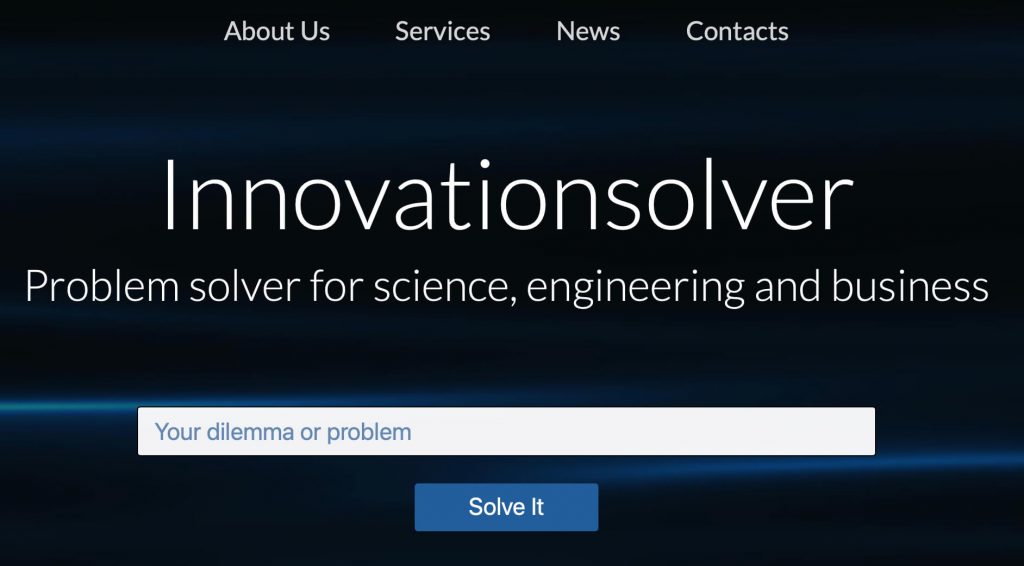
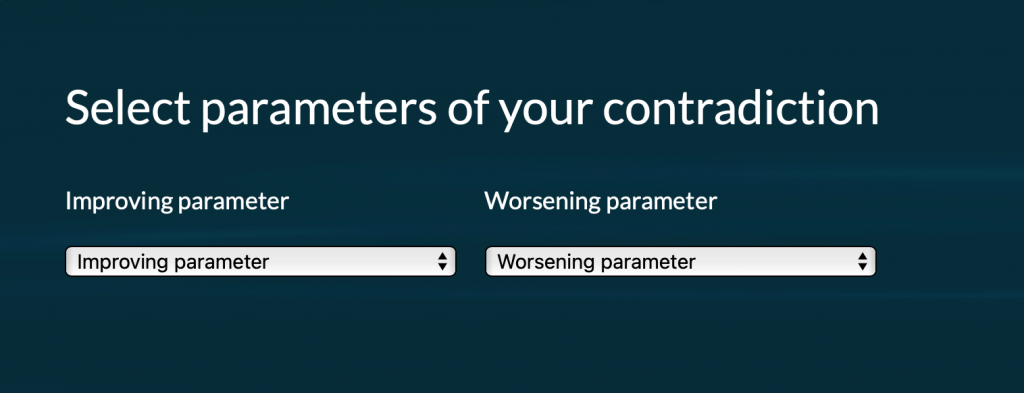
Based on this input, we offer the user: Possible applicable selected principles and risks solutions/mitigations and soloutions. In one of our expanded BINOM sub modules, this is typically presented as shown below, including probability versus consequences.
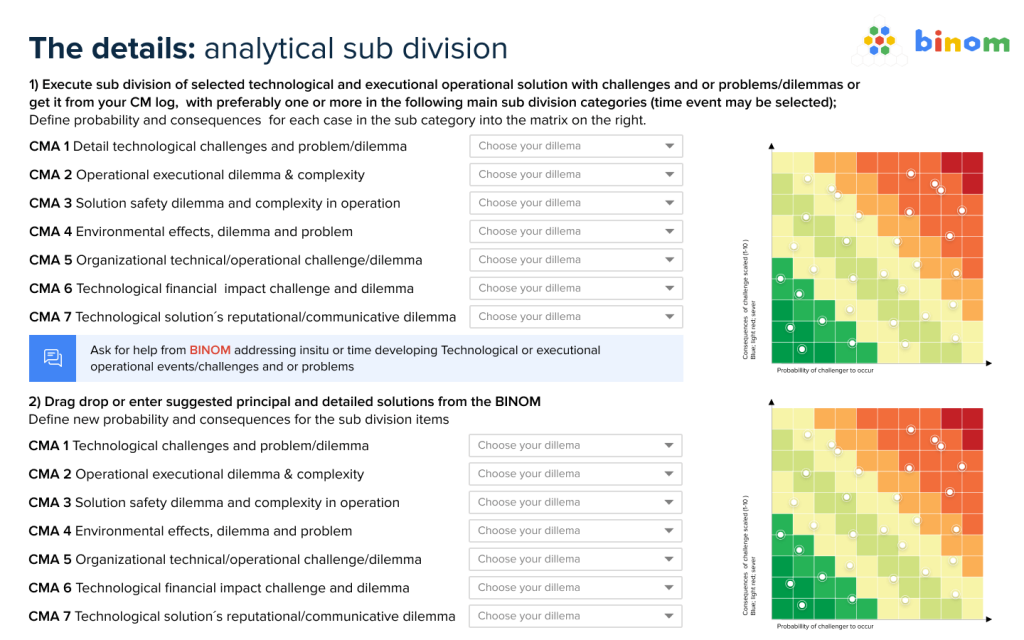
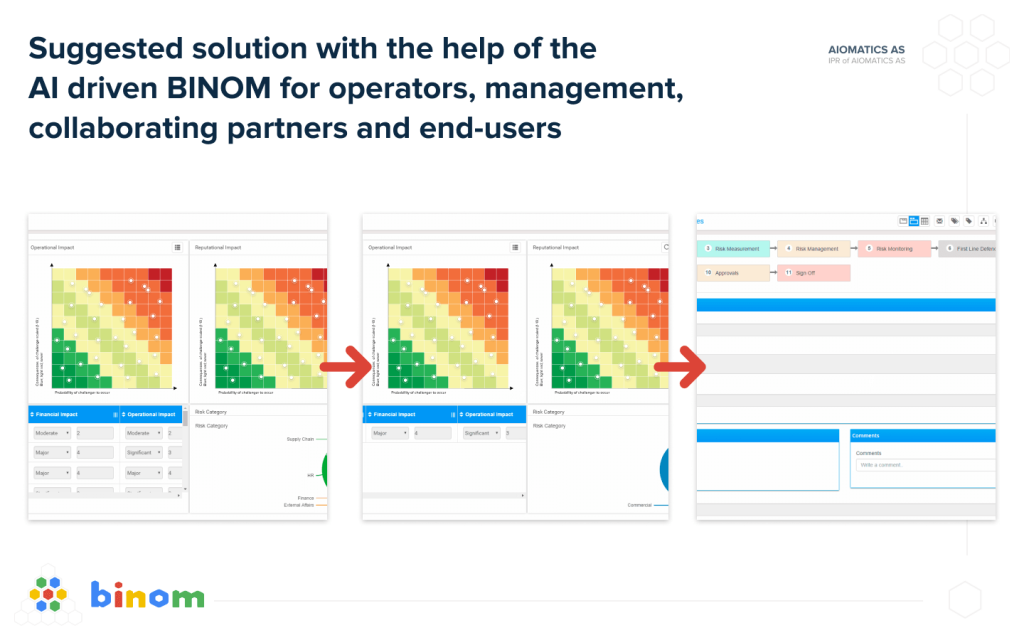
The AI driven algorithm, such as BINOM standard, should successfully be used complementary to discipline experts and operators.
Effects
In monitoring the results, we return to the beginning of our conversation about the human factors. It is not enough to; collect data, to analyze, to recommend solution. To avoid problems, we also need to gather data on the quality of how of human actions will execute the results after receiving such recommendations. We have found that solutions or mitigating results presented to the operator therefore also beneficially should reflect;
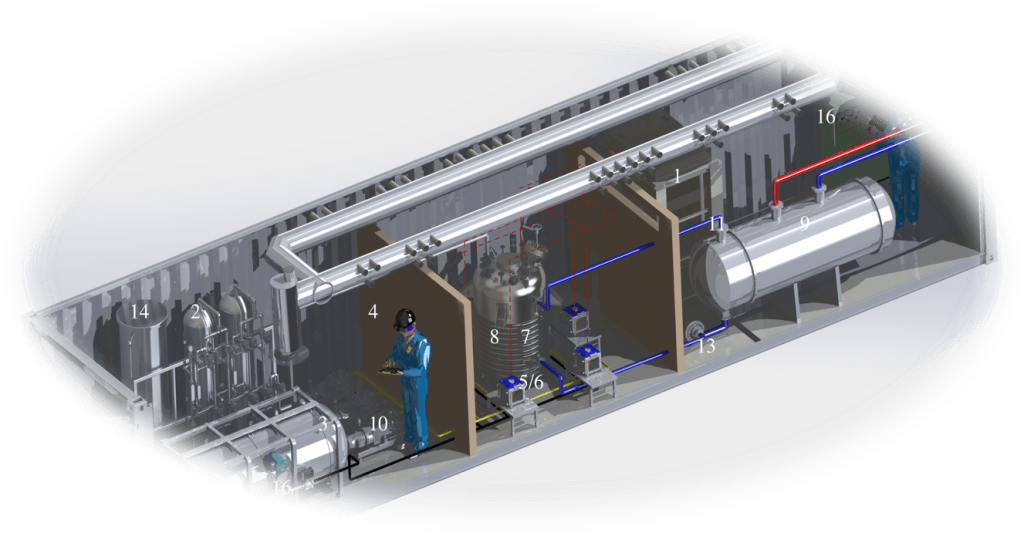
- Probabilistic likelihood of success reflecting historic experiences.
- Operational executional dilemma & complexity, safety dilemma and complexity in operation, environmental effects, dilemma and problem, organizational technical/operational challenge/dilemma, technological financial impact challenge and dilemma, technological solution´s reputational/communicative dilemma.
So, our task is not only to provide advice by AI driven algorithms, but also to ensure that we reflect on how the data will be used. Herein, and as part of mentoring, training and organizational development, we also invite world-class international specialists. We focus on their conclusions, and then offer users robust solutions.

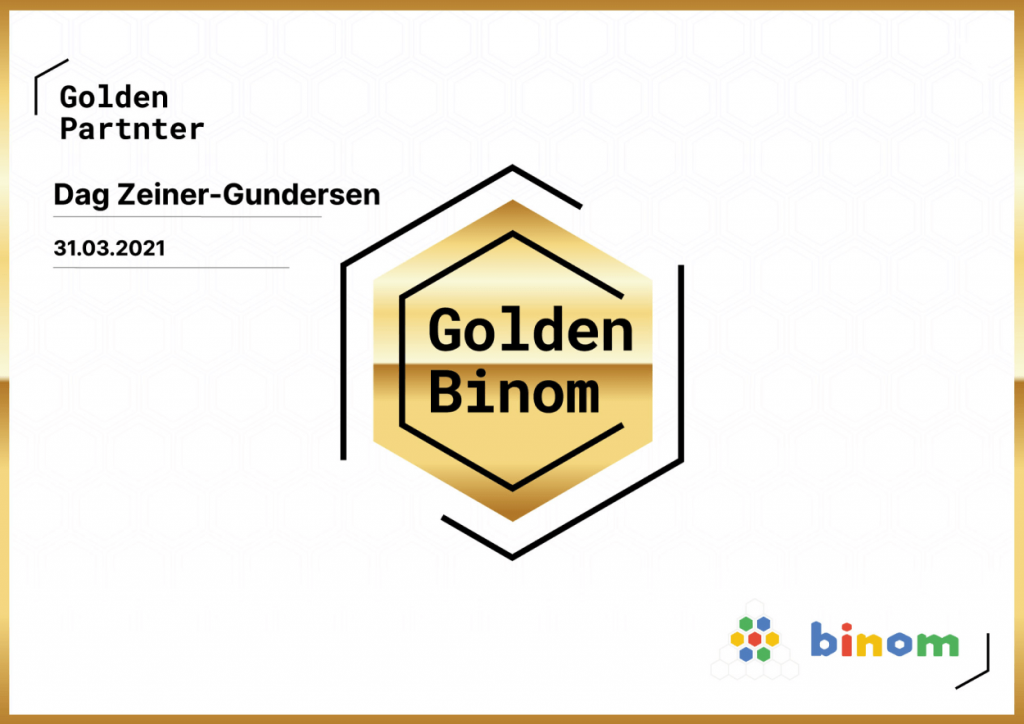
Summary
The objective of the BINOM algorithms are to provide and further develop effective AI supported Algorithms for mitigation or resolution of technologic and scientific executional project and crises risks. The BINOM algorithms shall be used for addressing the in-situ challenges and also used in forecasted cascade effected problems and dilemmas. In such become a tool for project, risk and crises operators and management. Therefore, not just identify and classify the challenges, as most programs, but also solving and or mitigating dilemmas and risks. The aim is making the BINOM series of algorithms available for project and crises management, for these to be better prepared, save time and cost, reduce stress and stay in forefront of project execution and crises development. The operators’ and management´s HMI shall be effective and simple in form, thus not causing a high user barrier.

 Developed by Digital Forest
Developed by Digital Forest